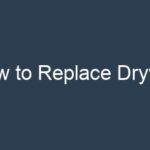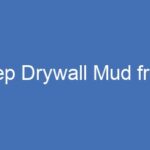Painting over small drywall repairs presents a couple of unique challenges. When working on a wall or ceiling in a high-visibility area with ample lighting, special care is required during the painting process to ensure seamless integration of the patch with the surrounding surface.
One common issue encountered when painting over drywall repairs is what experts refer to as “flashing.” Even if the paint color matches perfectly and the repair has been smoothly integrated with the adjacent wall area, the presence of the repair may still be discernible due to the way light interacts with the repaired surface. To help you overcome these challenges when painting drywall repairs, the following tips can be quite beneficial.
Match the Existing Paint Sheen
The sheen of paint varies depending on the level of gloss you desire. For instance, satin paints offer a matte finish with minimal light reflection, while gloss and high gloss paints reflect the maximum amount of light, resulting in a high-gloss appearance.
As paint dries and cures, it develops a sheen that affects how light is reflected off its surface. A well-painted wall maintains a consistent sheen across its entire surface. However, when new paint is applied over already dried paint, it’s nearly impossible not to notice a slight difference in sheen. Even if the same paint is used for the repair, the final sheen of the repair can slightly differ from the sheen on the rest of the wall. In critical areas, especially where ample light plays on the surface, you might find it necessary to repaint the entire wall or ceiling from corner to corner to ensure a seamless sheen.



Differing Eggshell Textures in the Paint Finish
Even on level five smooth walls, there is a slight texture in the paint. Paintbrushes leave fine straight lines in the direction of the brush strokes, while paint rollers create a texture reminiscent of an egg’s exterior. Thicker paint rollers leave a texture resembling orange peels.
It’s generally recommended to use a fine nap 1/4″ or 1/3″ roller for applying finish coat paint. Using such a roller results in a subtle eggshell finish. The smaller the nap, the less texture, but there will still be a slight texture.
One of the challenges when painting over drywall repairs lies in the difference in texture between the repaired area and the rest of the painted surface. Drywall mud, when lightly sanded, is perfectly smooth without any texture. Even if you use a low nap roller to apply paint over the repair, you may still notice a slight texture disparity between the repair and the previously painted area.
To mitigate this issue, start by applying a high-quality primer to the repair using a 3/8″ nap paint roller. Prior to the final paint coat, check if the eggshell texture matches the surrounding wall. If not, consider applying a second coat of primer or a first coat of paint exclusively to the repair area. Once you are confident that both textures match, proceed to apply the final paint coat. As previously mentioned in the section regarding sheen, you may opt to repaint the entire surface from corner to corner for a seamless blend.
Conclusion
The techniques employed for painting drywall repairs can significantly impact how well the final result harmonizes with its surroundings. Often, these considerations may not have a substantial impact when the patch is located in an area with standard lighting on a flat or satin finish wall or ceiling. However, in high-illumination areas, the tips mentioned above can make the distinction between a noticeable repair and one that seamlessly blends in.
tag: # Addressing Challenges in Painting Small Drywall Repairs







